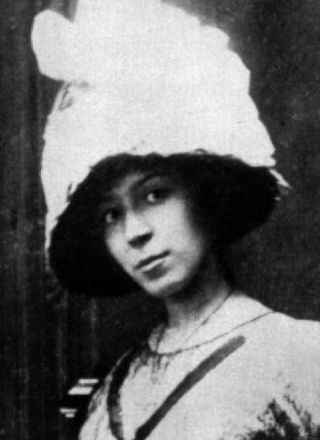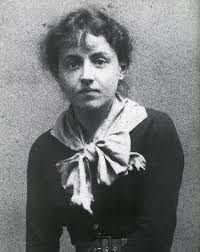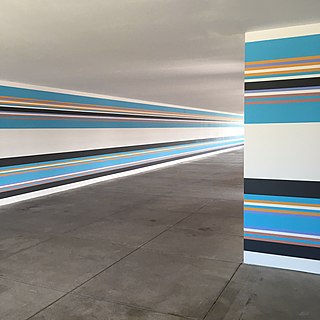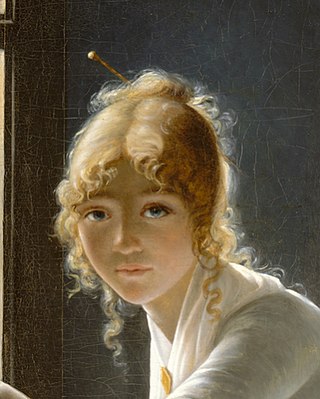
Berthe Marie Pauline Morisot was a French painter and a member of the circle of painters in Paris who became known as the Impressionists.

Jean-Auguste-Dominique Ingres was a French Neoclassical painter. Ingres was profoundly influenced by past artistic traditions and aspired to become the guardian of academic orthodoxy against the ascendant Romantic style. Although he considered himself a painter of history in the tradition of Nicolas Poussin and Jacques-Louis David, it is his portraits, both painted and drawn, that are recognized as his greatest legacy. His expressive distortions of form and space made him an important precursor of modern art, influencing Picasso, Matisse and other modernists.

Marie Laurencin was a French painter and printmaker. She became an important figure in the Parisian avant-garde as a member of the Cubists associated with the Section d'Or.

Louise Catherine Breslau was a German-born Swiss painter, who learned drawing to pass the time while bedridden with chronic asthma. She studied art at the Académie Julian in Paris, and exhibited at the salon of the Société Nationale des Beaux-Arts, where she became a respected colleague of noted figures such as Edgar Degas and Anatole France.

The absence of women from the canon of Western art has been a subject of inquiry and reconsideration since the early 1970s. Linda Nochlin's influential 1971 essay, "Why Have There Been No Great Women Artists?", examined the social and institutional barriers that blocked most women from entering artistic professions throughout history, prompted a new focus on women artists, their art and experiences, and contributed inspiration to the Feminist art movement. Although women artists have been involved in the making of art throughout history, their work, when compared to that of their male counterparts, has been often obfuscated, overlooked and undervalued. The Western canon has historically valued men's work over women's and attached gendered stereotypes to certain media, such as textile or fiber arts, to be primarily associated with women.

Marie-Denise Villers was a French painter who specialized in portraits.

Marie-Guillemine Benoist, born Marie-Guillemine Laville-Leroux, was a French neoclassical, historical, and genre painter.

Pauline Auzou was a French painter and art instructor, who exhibited at the Paris Salon and was commissioned to make paintings of Napoleon and his wife Marie Louise, Duchess of Parma.

Marie Bracquemond was a French Impressionist artist. She was one of four notable women in the Impressionist movement, along with Mary Cassatt (1844-1926), Berthe Morisot (1841-1895), and Eva Gonzalès (1847-1883). Bracquemond studied drawing as a child and began showing her work at the Paris Salon when she was still an adolescent. She never underwent formal art training, but she received limited instruction from Jean-Auguste-Dominique Ingres (1780–1867) and advice from Paul Gauguin (1848–1903) which contributed to her stylistic approach.

Anne Vallayer-Coster was a major 18th-century French painter best known for still lifes. She achieved fame and recognition very early in her career, being admitted to the Académie Royale de Peinture et de Sculpture in 1770, at the age of twenty-six.

Marie-Victoire Lemoine was a French classicist painter.

Constance Marie Charpentier was a French painter. She specialized in genre scenes and portraits, mainly of children and women. She was also known as Constance Marie Blondelu.

The Horse Fair is an oil-on-canvas painting by French artist Rosa Bonheur, begun in 1852 and first exhibited at the Paris Salon in 1853. The artist added some finishing touches in 1855. The large work measures 96.25 in × 199.5 in.

Marie-Françoise Constance Mayer La Martinière was a French painter of portraits, allegorical subjects, miniatures and genre works. She had "a brilliant but bitter career."

Little Girl in a Blue Armchair is an 1878 oil painting by the American painter, printmaker, pastelist, and connoisseur Mary Cassatt. It is in the collection of the National Gallery of Art, Washington D.C. Edgar Degas made some changes in the painting.
Jeanne-Elisabeth Chaudet was a French painter and the wife of the sculptor Antoine Denis Chaudet, who had also been her teacher.

Isaac Dudley Fletcher was an American businessman, art collector and museum benefactor.

Anne Guéret (1760–1805), known as Mlle Guéret the Younger, was a French painter who was active at the end of the 18th century and the beginning of the 19th century. Anne and her sister Louise Catherine Guéret were orphaned as children but were adopted by the dramatist and librettist Michel-Jean Sedaine. He introduced them to the painters Henri-Pierre Danloux and Jacques-Louis David who gave them art lessons. In 1793 Anne made her Salon debut. She continued to exhibit in Salons until 1801 presenting mainly portraits.

Madame Georges Charpentier and Her Children is an 1878 oil on canvas painting by Pierre-Auguste Renoir. It depicts Marguerite Charpentier, a French salonist, art collector, and advocate of the Impressionists, and her children Georgette and Paul. The painting is held by the Metropolitan Museum of Art.

Charlotte du Val d'Ognes, born Marie Joséphine Charlotte du Val d'Ognes, was a French aristocrat who is notable for being the subject of the 1801 portrait painting Portrait of Charlotte du Val d'Ognes by Marie-Denise Villers.



















